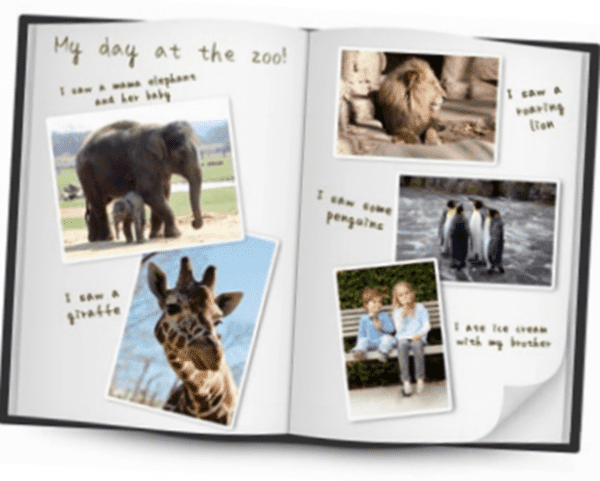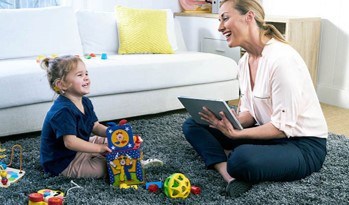An experience book is a personalized story book you make with your child where the child is the main character of the story. Designing the book and reviewing your work together will provide a means for you to add creative fun to your child’s cochlear implant hearing therapy.
Why an Experience Book?
Creating an experience book allows you to tell stories. For your child, listening to these stories leads to talking which transfers into telling stories themselves, all important aspects of listening, speech and literacy development.
It allows for the practice of receptive and expressive language about experiences that are uniquely meaningful, interesting and motivating for you and your child.
Provides opportunity to review teachable moments to input language and reinforce incidental listening and learning.
Develops conversational skills when you and your child:
- Interact about everyday events.
- Retell experiences you have had or will have in the future.
- Use developmentally appropriate and targeted speech and language.
- Answer and ask questions.
- Take conversational turns.
- Rehearse a story.
First Experience Book
The sound book is often a young child’s first experience book. It includes pictures of items that have a distinctive sound. It is useful for encouraging very young children with hearing loss to listen and talk. Include in the book pictures of animals, vehicles and objects that make an identifiable sound. For example: a cow and the “moo” sound, a train and a whistle sound, a baby and a “shhh” sound. Find pictures from magazines, on the internet, from a children’s story book, etc. to add into your child’s sound book.
When you look at the sound book with your child, provide practice for them to hear and say these different sounds. This allows the child to associate a picture of an object with the sound it makes, developing symbolic language by attaching meaning to each sound. Early receptive language is apparent when they look or point to the picture or object when hearing you say the sound. The child exhibits early expressive language when they spontaneously say the sound associated with the picture or toy.
Experience Book for Older Children
As your child progresses and can create their own experience book, encourage them to share stories with others and remember to provide enough, but not too much, information. Teach your child to incorporate five elements in each story:
- Setting: When and where did the story take place?
- Characters: Who is in the story?
- Main idea or problem: What is the story about?
- Events: What happened?
- Conclusion: How does the story end?
Taking an Experience Book to the Next Level
As your child matures, introduce and provide opportunities to enrich their knowledge about specific topics. Prepare your child for the experience and follow up after the experience by including more details in the experience book.
- Pre-teach words and ideas before the actual experience.
- Build upon previously learned story elements to include more detailed information in a story.
- Sequence what happened.
- Learn new vocabulary that transfers from listening to speaking and from reading to writing.
- Use writing and reading as a playful activity.
- Illustrate the experience with pictures or drawings.
- Retell the experience or read the text to tell the experience.
Creating experience books with your children can help them grow as an individual and provides them a way to express themselves—supporting the development of listening with their cochlear implant. Leading to receptive and expressive language in very young children, as well as enhancing the listening and speaking vocabularies of the more mature child.
Create memories and make your child’s cochlear implant hearing therapy more engaging with an experience book. Download our experience book guidelines and get started today!



